Electrostatics experiments
by Michel Maussion - University of Nantes - France |
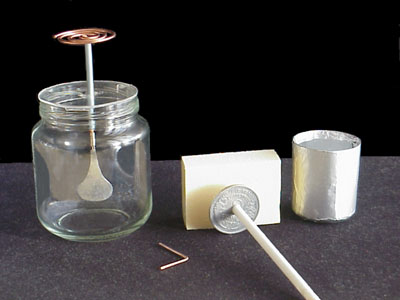 |
|
Take the cap of one of the tubes you have used to make your supports. Cover it with aluminium outside and inside. Find a metallic disc, which diameter is smaller than the cap, and stick a plastic rod in the middle. |
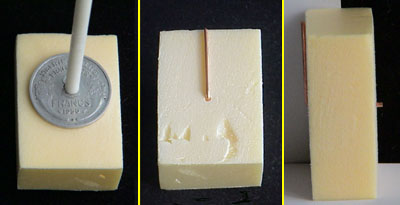 |
|
Cut out a piece of extruded polystyrene in the form of a parallelepiped. Its biggest area must be larger than the disk. Pierce it in the middle by a copper wire bent at a square angle so it overstep the thickness 2 mm. |
Material is ready.
Take the piece of polystyrene between your thumb and your third finger and rub with cotton or wool, the face around copper that overruns. Be careful not to touch this area in the following. |
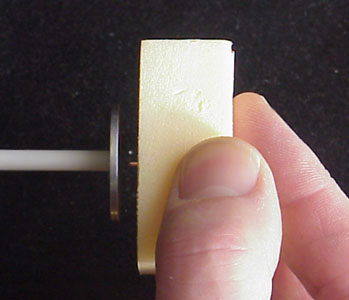 |
|
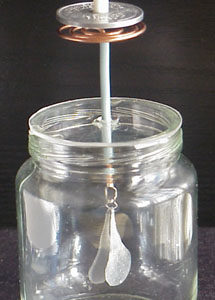 |
| Put your index finger on the thread backside to ground it. Take the disc by the stick with the other handand make contact. |
|
Verify that the disc is loaded. |
|---|
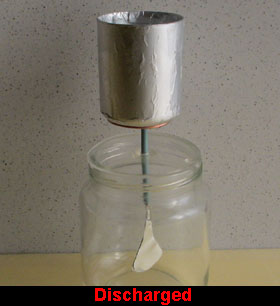 |
|
Place the cylinder over the plate. |
Do not lay down the insulator block. You can begin to charge the electrophorus again and discharge it at the bottom of the cylinder. Leaves part a bit more at each time.